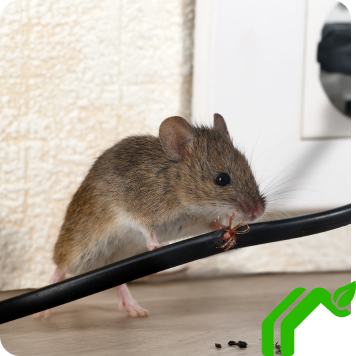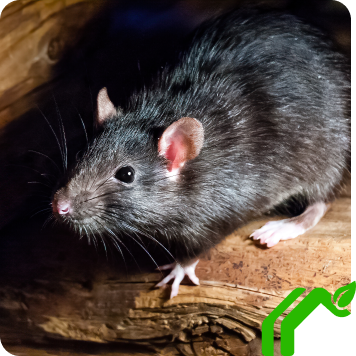Rodents enter your home for food and shelter. They are noisy and destructive and can harm your pets and family. Signs of a rodent infestation include the following:
- Scratching and squeaking noises in the walls and attic.
- Rodent droppings near nests and food sources. They’ll also urinate on your walls and throughout your home, eventually generating a noticeable odor.
- Chewed wires, insulation, wood, drywall, and other materials
- Nests in attics or crawl spaces.
- Greasy marks along pathways and near entrances
Problems Caused By Rodents
Mice and rats cause damage and are carriers of hantavirus, the West Nile Virus, and even the plague. They’ll gnaw through furniture, walls, and insulation to nest. Rodents invade every corner of your home, from your attic to your basement. They’ll sneak into food sources, eating some and contaminating the rest.
What Types Of Rats And Mice Are In Phoenix, Arizona?
There are four common types of rodents in Arizona, and you have probably encountered them all.
- Roof Rats: Roof rats are sometimes called black rats or ship rats. Rodents often nest in high areas like attics, chewing through anything they can. If you see chewed wires and rat droppings all over your attic, you have a roof rat problem.
- Pack Rats: A desert-loving rodent often seen in Arizona homes. Like roof rats, they like to nest in attics, but you might also find them in places with lots of insulation or debris to build their nests. While they usually don’t bite people, their urine and droppings can spread diseases.
- House Mice: House mice are smaller than rats and often have a gray coat and off-white underbelly. These mice leave dozens of droppings everywhere daily, contaminating everything around them.
- Deer Mice: While you are less likely to find deer mice in your home, if you do, you need to take action right away. These mice are carriers of hantavirus, which can travel to humans when they inhale particles contaminated by infected deer mice. You may find them hidden in drawers, cabinets, and storage containers.
The Differences Between Rats & Mice
Rats can enter your home through spaces as small as a quarter, and mice only need an area as big as a dime. The type of rodents you have in your home or business will play a significant role in dealing with the infestation.
You can tell whether you have mice or rats based on the evidence they’ve left behind or from a direct sighting. Some key differences between mice and rats include:
- Size: Mice and rats vary significantly in size. Black rats can grow to 18 inches long, while mice typically remain under four inches.
- Ears: Mice and rats have distinctively different ears. Mice ears are large and round, while rat ears are small and closer to the head.
- Tails: Rats are known for their long, scaly tails, while mice have thin tails covered with short hairs.




